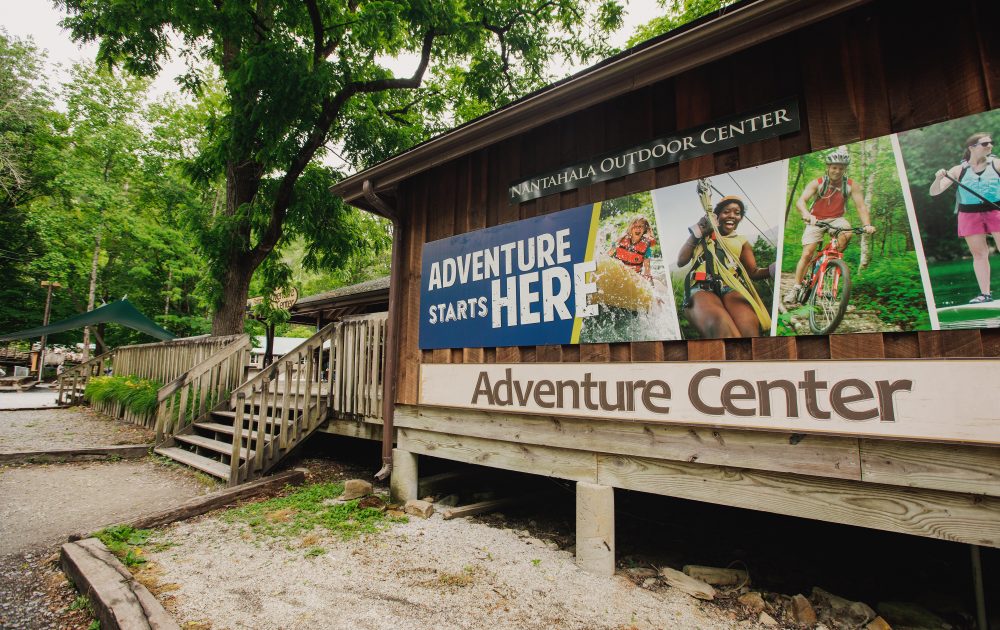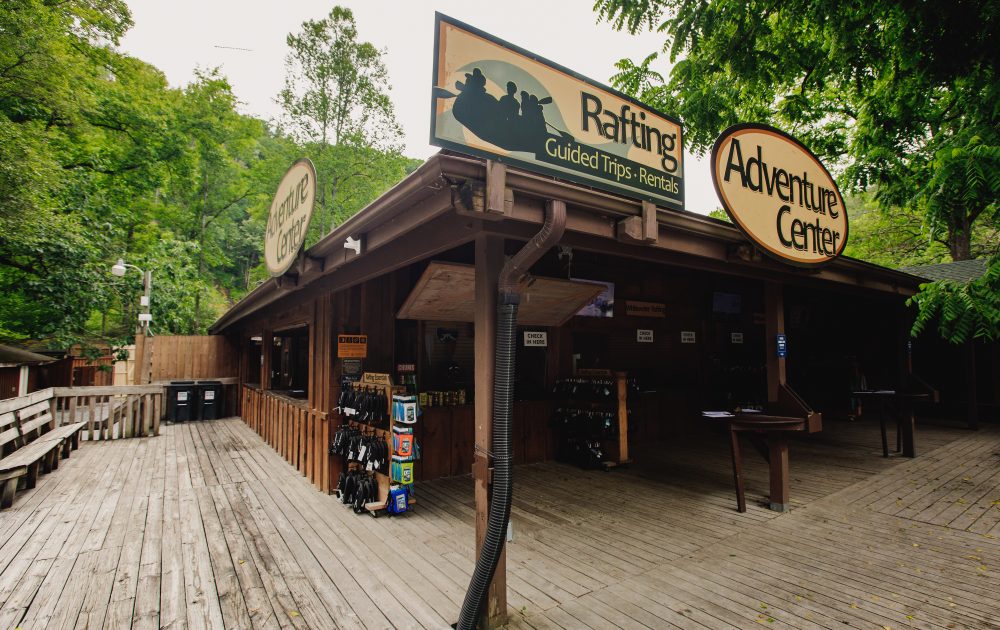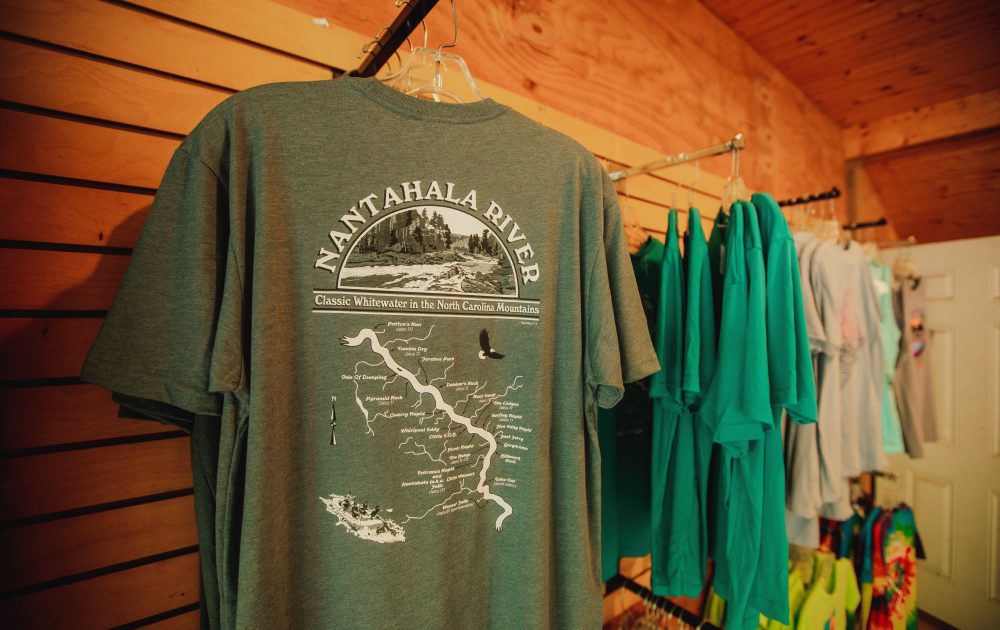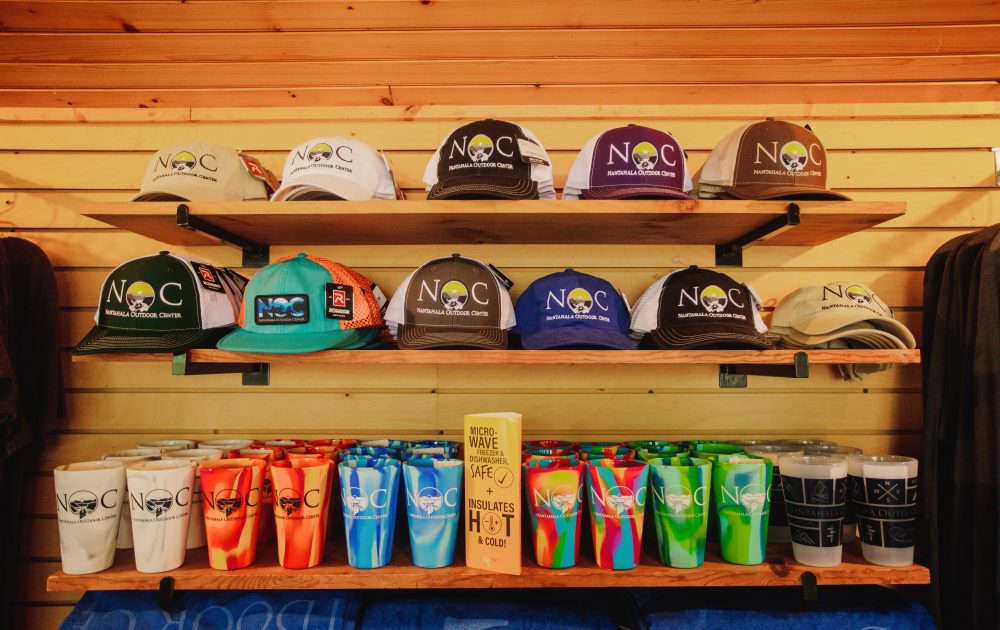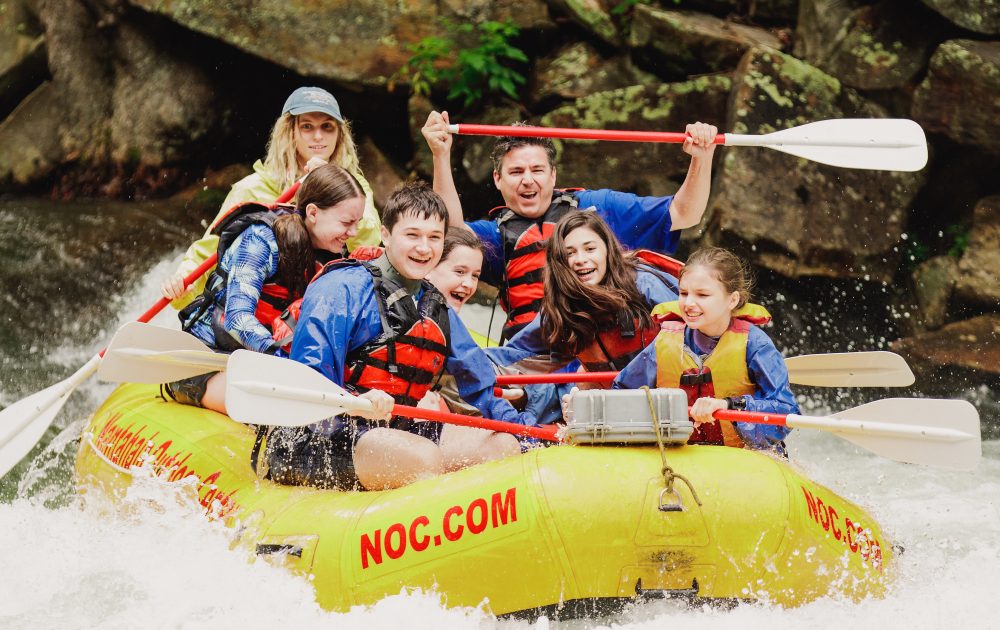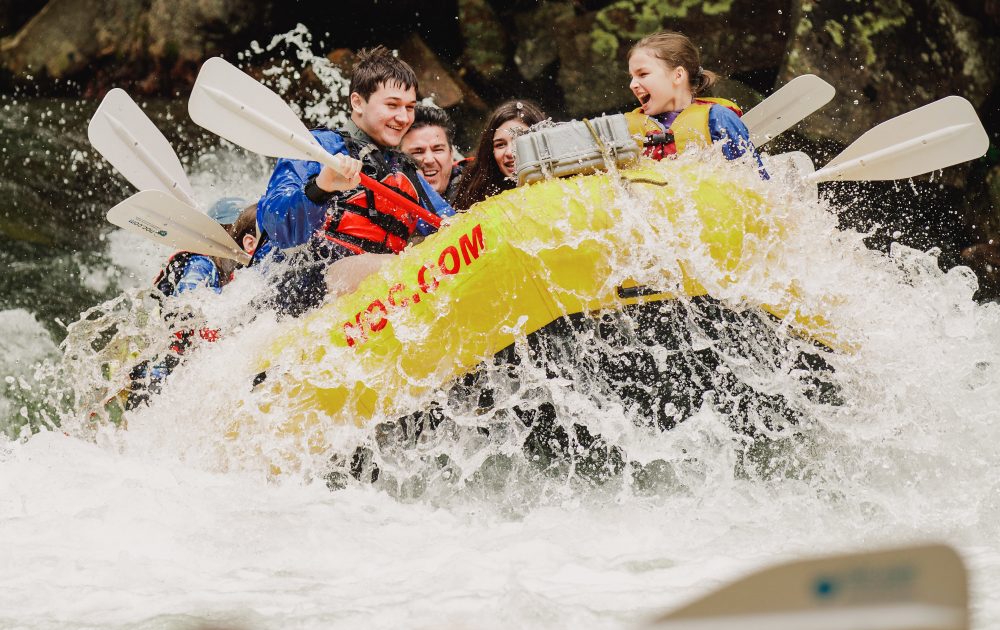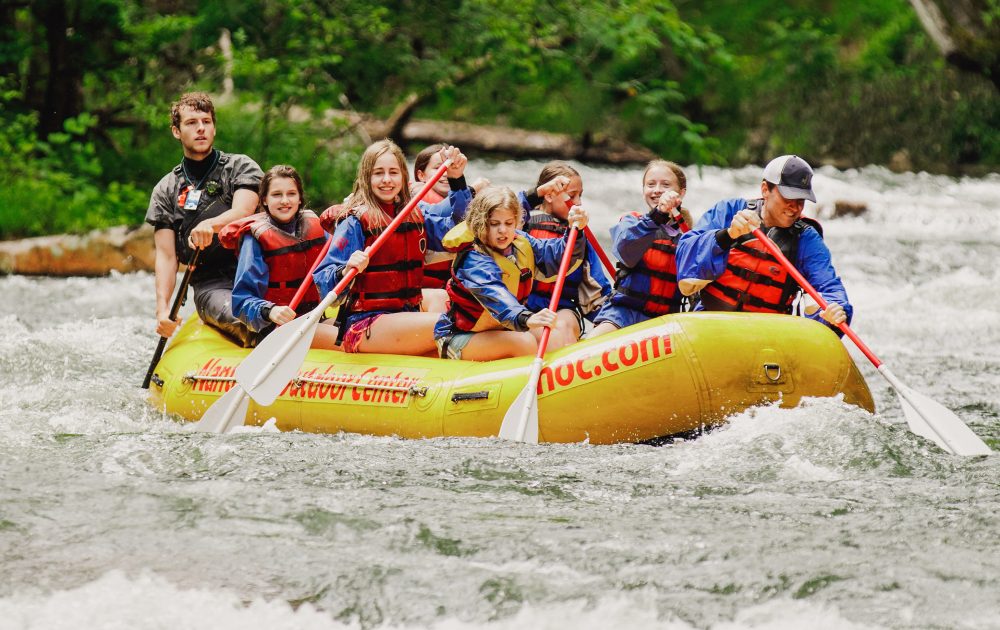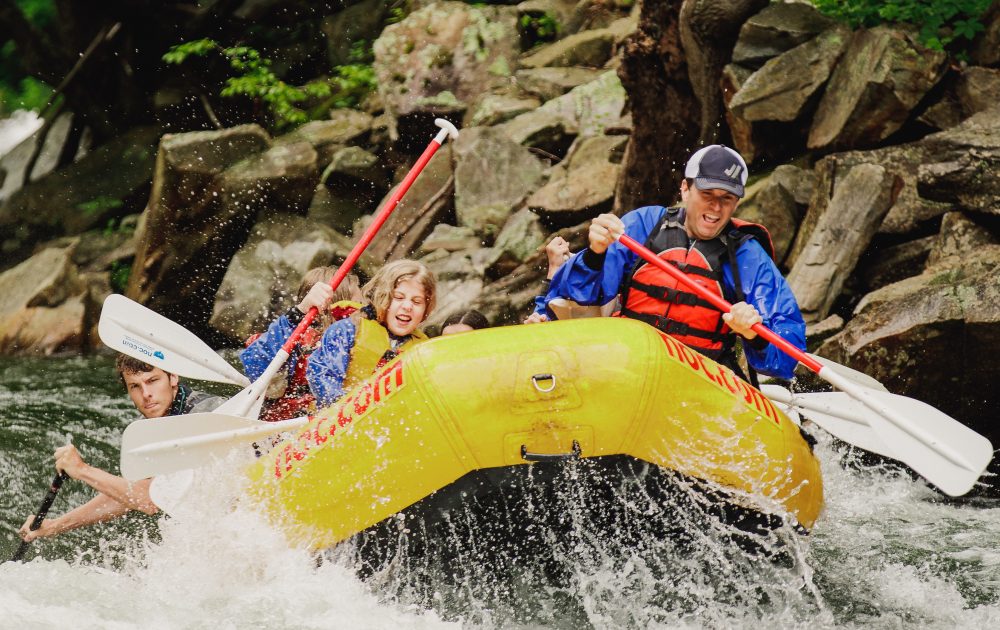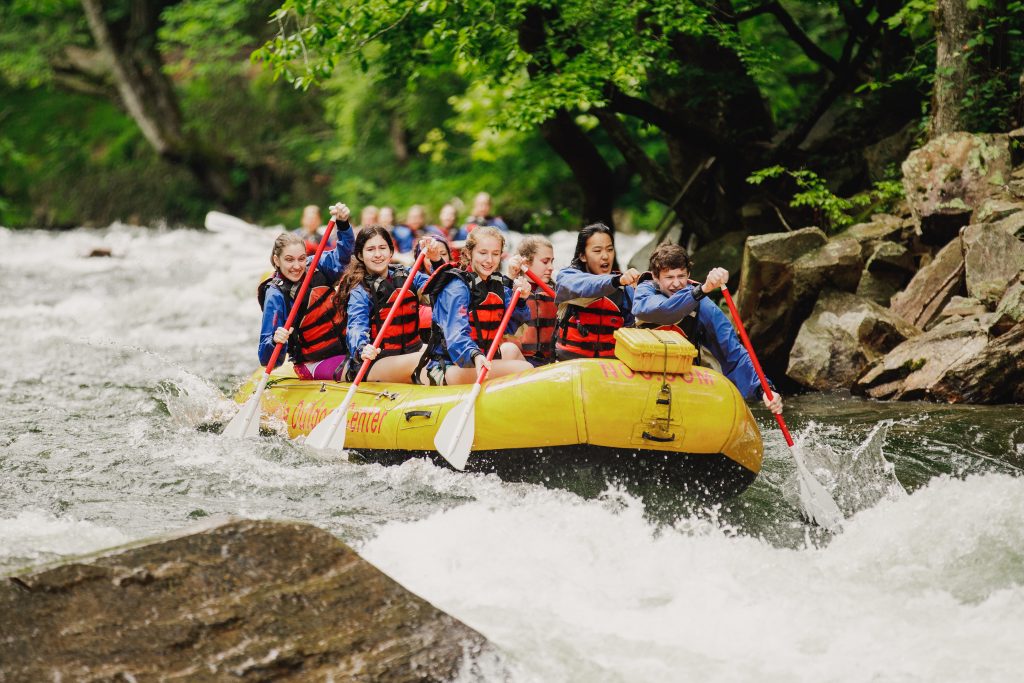
Photos Cameron Flaisch
So, you have never been whitewater rafting before?
You’re not alone.
Out of the handful of V3 staff venturing through the hills of North Georgia into North Carolina early one rainy June morning, roughly half of us have set paddle in a river before.
The other half are noticeably more nervous.
Our destination is the Nantahala River, located just outside Bryson City, N.C. This river boasts a number of class two whitewater rapids, capped off by a class three rapid that culminates your trip. But we’re not there quite yet.
The Nantahala Outdoor Center (13077 Hwy 19 West, Bryson City), our outfitter of choice, offers a wide array of outdoor adventure options, from rafting, to kayaking, ropes course and zip lining and more. From the moment we arrive it is clear that we are about to have a blast.
Once we stow all of our phones and wallets, apply sunscreen and sign all of the necessary waivers, we are outfitted with the gear that would propel us through our trip. Now, armed with paddles, life jackets and mercifully, splash jackets to protect our arms from the frigid water, we think we are ready to go.
Fortunately, the NOC supplies us with one last piece of gear before hitting the water and that is information on whitewater safety. Quickly, we learn the whitewater swim position in case one of us falls out – nose and toes pointed downstream, never stand up in moving water and curl up into a cannonball if you wind up swimming through the waterfall. (We won’t share how many faces turned white at this point.)We also learn how to correctly grip the handle of our paddles to avoid becoming a hazard to our raft mates, and before long, reminding shouts of “T-grip!” can be heard among our group.
Now that we are fully outfitted and informed, it is time to hop on the bus for the trip to the beginning of our river run. The important thing to know at this point is that, universally, river guides like to tell jokes that amuse themselves. So it comes as no surprise during our bus ride when our trip lead asks for a show of hands of who had never done this before, his immediate response is, “Well all you have to do is stay seated and keep your hands and feet inside the bus at all times!”
Let’s hope that our guide will forgive us for spoiling the punch line to his joke. If you ever hear him ask, do us a favor and raise your hand anyway.
Once we reach our put-in point, we stop and marvel at the guides’ teamwork that make getting rafts down from atop a school bus look like a well-oiled machine. Soon, it was our turn to carry our team’s raft down to the river’s edge, where we prepare to board.
It was at this point that we first encounter the bone-chilling cold that is the Nantahala River. Not only is the river fed from the depths of the Fontana Lake, but it is also seated in a shaded gorge, which means that it only receives a few hours of direct sunlight each day. In fact, the name Nantahala is a Cherokee word which means “Land of the noonday sun.” On average, the water’s temperature is about 45 degrees, and on this particular rainy day our feet, already numb from the icy river nipping at our toes, wonder if the temperature even reached that high. We are instantly grateful for the splash jackets that kept our arms protected from the frigid water as we were paddling.
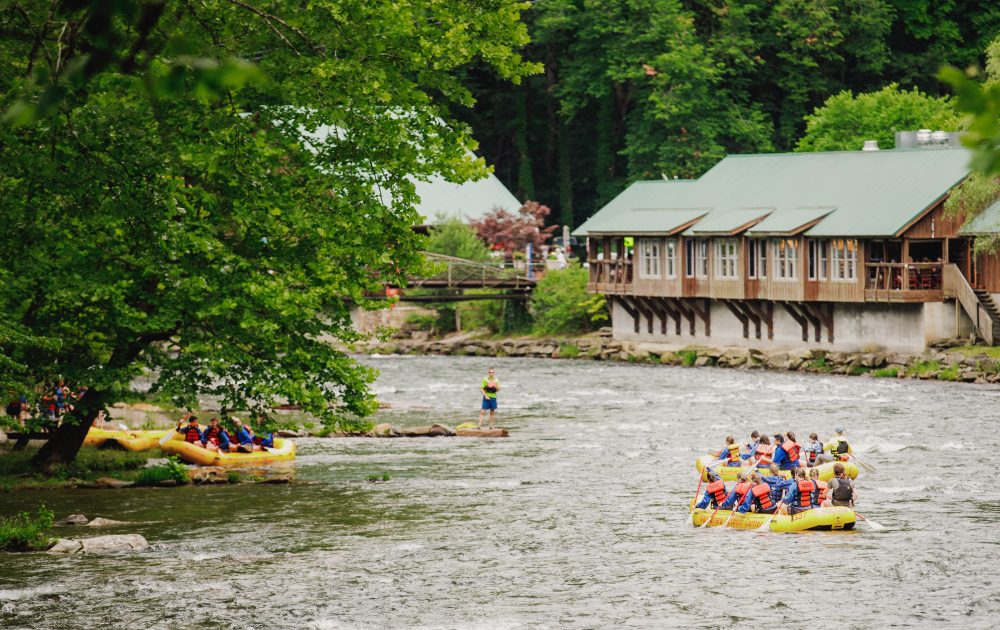
Paddling the raft requires a great deal of teamwork and coordination so that we move down the river at the proper speed, and avoid paddling in circles. Thankfully, our river guide does the lion’s share of the work, acting as our boat’s rudder, instructing us when to paddle and for how long. Essentially, we are the wheels on the raft, and our guide is the steering wheel and driver combined, working with the ever-racing water to navigate us down the river. Our guide skillfully weaves us across the river, placing us in the perfect position to experience the rapids, while all the while steering us away from hazards like downed trees or rocks with the potential to beach the raft.
There’s something magical about the river between rapids, the combined relief and adrenaline of successfully nailing yet another obstacle heightens the senses. We are even more aware of our surroundings and we have time to bask in the beauty of the setting before arriving at the next rapid. An overcast sky and thick fog from the occasional rain shower add an otherworldly quality to the river’s beauty. It almost seems as if we are moments away from ducking the teeth of a T-Rex in Jurassic Park, and we fully expect to see a rogue raptor at any moment.
By this point, our team has grown confident in our paddling, comfortably numb in our feet, and ready to get even more adventurous. Soon our guide propels us through rapids as we paddle in opposite directions to make the raft spin the entire way through. We choose our level of difficulty before approaching the rapid, and our guide takes us through the real-life pages of our own version of a choose-your-own-adventure book.
Although our entire trip down the river lasts over two hours, it felt like hardly any time at all had passed before approaching the last rapid, the infamous class three waterfall and the cause of the aforementioned white faces. We know ahead of time that if we were to fall out of the raft before going over the falls, we’d need to curl up and ride over the drop, cannonball style, and then to look for a rescue rope thrown to us by one of the guides. That information alone seems to steel our group’s determination to make it over the falls with a solid piece of raft between us and the water. Between our refusal to swim the drop and expert navigation on the part of our guide, we make it over the falls, all inside the boat.
Now we celebrate our success, and watch other rafts follow behind us while not-so-secretly hoping that someone would fall out for our own entertainment.
Selfish?
Yes.
Funny?
Also yes.
Once we regain feeling in our feet, return our gear and change into dry clothes, we then venture over to see photos from the last rapid. The NOC must share our interest in watching rafts spill passengers over the falls, as their photographer is set up and primed to catch that very moment. Thankfully for us, our photos contain more elated faces and celebratory paddle-pumps than looks of fear, which is a victory in itself.
For anyone considering taking a whitewater rafting trip with the NOC, here are a few things to keep in mind.
1. Good paddling is really just good direction following and timing. If you can count to three and follow the person ahead of you, you can paddle a raft with a team.
2. Good paddling will help your guide get to where you need to be on the river, which means you’ll have the best experience possible through the rapids.
3. You’ll be cold, but that adds to the fun. Plus, you can brag about it later.
4. You might surprise yourself at just how much fun you’ll have!
Rafting the Nantahala might be outside of your comfort zone, but if you ask any of our staff, I think they’d tell you it’s worth the risk.

